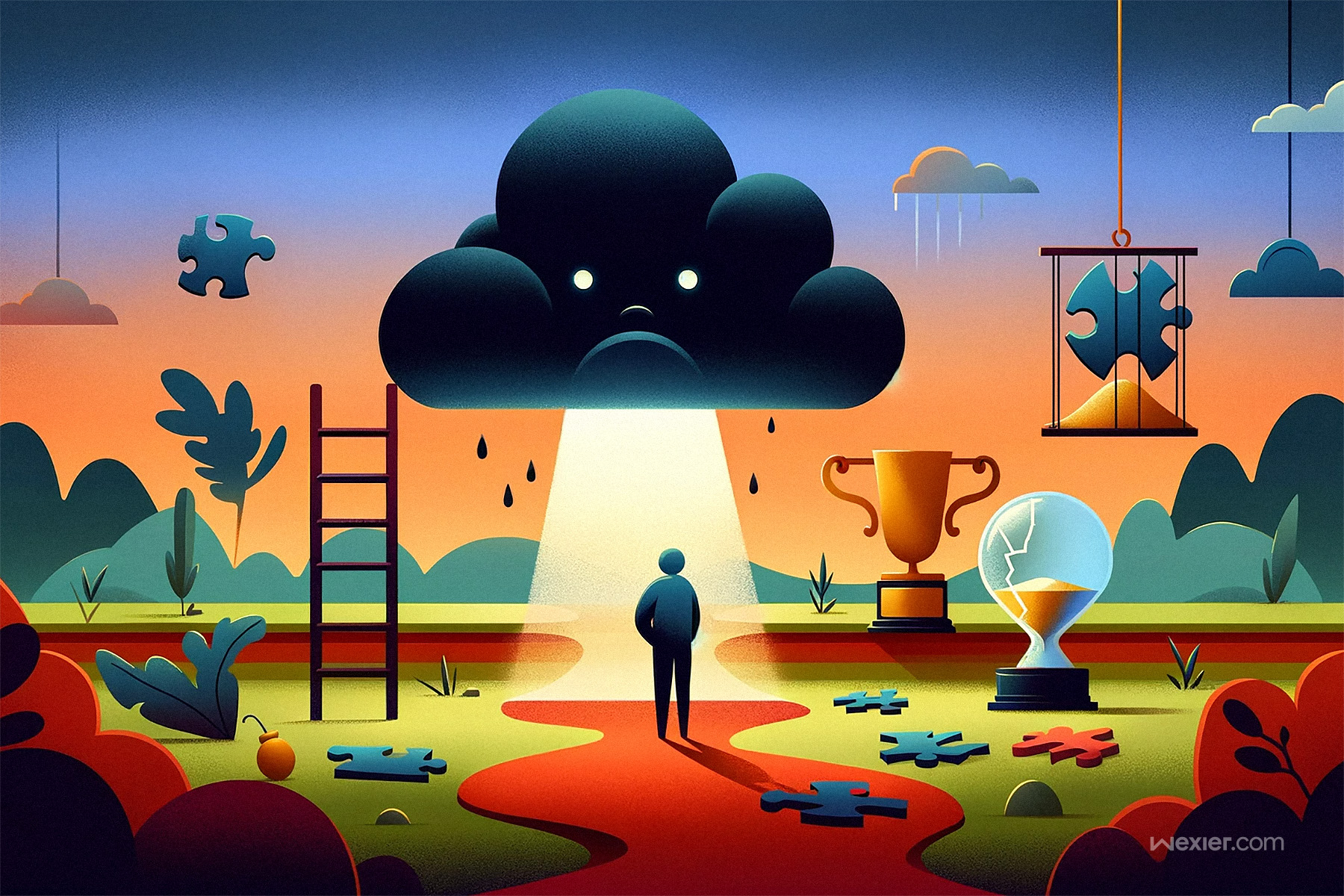In an era where digital connections are at our fingertips, the silent echo of loneliness often reverberates through our seemingly connected lives. The glow of screens may illuminate our faces, but do they truly light up our hearts? It’s an ironic twist of our modern narrative: the more we ‘connect’, the more isolated some of us feel. Yet, loneliness, often whispered about but rarely confronted, is a shared human condition, cutting across the noise of our busy lives and leaving a quiet yearning for something more profound.
I wrote this article to confront a modern paradox: our extensive digital connections often leave us feeling more isolated than ever. Through these chapters, my aim is to guide you from the shadows of solitude into the warmth of companionship. I hope to offer you both solace and solutions.
Chapter 1: Understanding Loneliness
Have you ever found yourself scrolling through your phone, uncertain about who to call for a movie night, a celebration, or simply for some comfort? Perhaps you’ve realized that your circle of friends isn’t as extensive as you’d like it to be, leaving you with an unsettling feeling of loneliness. Well, you’re not alone in feeling this way. Loneliness is a universal emotion that can affect us all, regardless of age or background.
Friends make life good; they provide the scaffolding that makes life not just bearable but fun. They give us a sense of meaning, purpose, security, self-esteem, and happiness. In fact, research suggests that how connected you feel is one of the key predictors of your overall happiness. A lack of social connection has been associated with various diseases and even a shorter life.
But let’s delve deeper into this topic. What is loneliness, exactly? Loneliness isn’t just about being physically alone; it’s a profound sense of disconnection and isolation from others. It’s that feeling of being adrift, despite being surrounded by people or having virtual connections. Loneliness can take a toll on our mental and emotional well-being, leaving us feeling empty and unfulfilled.
In today’s fast-paced world, loneliness is on the rise, and surprisingly, it’s most prevalent among young people. The global pandemic and social distancing measures have impacted the relationships of teens and young adults, leaving many feeling disconnected. Lifelong friendships that could have blossomed have been put on hold, with long-term consequences for our collective happiness.
But the good news is that it’s not too late to forge new friendships and strengthen existing ones. In this article, we’ll explore why people might feel lonely at times, what loneliness is all about, and most importantly, how to overcome it. So, let’s embark on this journey of understanding and healing together.
Chapter 2: Why We Don’t Have Enough Friends
You may ask yourself, “Why don’t I have enough friends?” Well, the answer is multifaceted. One of the primary reasons is that many people don’t prioritize friendships enough. Friendships often take a back seat to other life decisions, such as work, commuting, romantic relationships, or raising children. These demands can consume so much of our time and energy that it becomes easier to stay home and engage in mindless activities.
This trend isn’t exclusive to adults; even teenagers are spending more time on platforms like TikTok than engaging in real social interactions. The result is a society where friendships are given less attention and effort than they deserve, despite their critical role in our happiness.
Established friendships require less time investment than the early stages of forming new ones, but they still demand commitment. It’s easy to skip checking in with a friend during exciting or challenging times, and many friendships fade into obscurity due to a lack of attention. This isn’t just a loss for one person; it’s a loss for both parties involved.
Furthermore, the structure of friendship networks can also leave individuals vulnerable. The Friendship Paradox tells us that, on average, most people have fewer friends than their friends do. This is because people are more likely to be friends with those who have many friends. Friend networks are often built around central hubs, so if these central people disappear from your life, you may lose multiple connections simultaneously. This can lead to a distorted self-perception, where you feel less popular than you actually are.
Life events can exacerbate the situation. Moving for school, work, or love can leave you without your previous social networks. Breakups can also result in a smaller share of the social pie you once enjoyed. The underlying cause of these challenges is time; there’s no shortcut to forming and maintaining friendships.
Chapter 3: How to Make New Friends
So, how do you go about making new friends and strengthening existing friendships? The process may seem daunting, but it’s not as complicated as it may appear. Making friends is rooted in a few fundamental principles that, when applied, can significantly enhance your social connections.
The most crucial aspect of making friends is spending time with people in the real world. Our ancestors formed relationships by spending casual time together, and this fundamental human need still holds true today. In school and university, overlapping schedules and shared activities make it easier to form new friendships naturally. However, even in adulthood, regular facetime and shared experiences remain key to forging connections.
It’s important to note that making friends is not a numbers game or a competition. Everyone’s social needs and preferences evolve over time. What worked for you as a teen may not suit your needs in your twenties or thirties. There is no one-size-fits-all approach to friendship; it’s about finding what works for you.
To make new friends, seek out places and activities that align with your interests and comfort level. Extroverts may thrive in lively, social settings like bars or sports events, while introverts might prefer quieter environments like bookstores or parks. Don’t underestimate the potential of your professional life either; colleagues can become lifelong friends, especially if there’s a shared interest and a balanced power dynamic.
Additionally, don’t forget about old friends you may have lost touch with. Reviving these relationships can be as simple as making a phone call or extending an invitation. More often than not, the other person will appreciate your effort to reconnect.
When you meet someone you vibe with, taking the initiative to make the first move can be intimidating. However, remember that they may be experiencing the same hesitation. Taking the risk to initiate contact can lead to a lifelong friendship, making it a risk well worth taking.
Once you’ve established early connections, it’s essential to check in with your friends during important moments in their lives. Building meaningful connections takes time and effort, but the rewards are immeasurable.
Two crucial principles that can help you transform acquaintances into friends are caring and sharing. People tend to appreciate those who genuinely show interest in them. Take the time to learn about others, ask questions, and listen actively. Additionally, reciprocity and openness are key. Share personal experiences in a balanced way, allowing others to feel comfortable sharing as well. It’s all about finding that sweet spot between opening up and oversharing.
Human brains are hardwired to seek connection. It’s perfectly normal to desire new friends and deeper connections. Friendships are waiting to be formed everywhere, and there are countless individuals who would welcome the opportunity to be part of your life as a good friend. So, prioritize friendships, invest time in them, show genuine interest in others, and be open to social opportunities. With patience and effort, you’re well on your way to building and maintaining meaningful connections that will enrich your life.
Final Note
As we reach the end of this exploration into the heart of modern loneliness and the art of friendship, I hope you’ve found solace in the shared experience and empowerment in the strategies provided.
Remember, the quest for companionship is as old as humanity itself, and despite the changing social landscapes, the core principles of friendship remain timeless. I invite you to step out from behind the screen, to engage with the world, and to open yourself to the myriad of opportunities for connection that await. May the chapters that follow in your life be filled with the laughter, support, and warmth of true friends. Here’s to building bridges over the gaps of loneliness and walking confidently into a future rich with genuine bonds and shared moments.
Go explore the countless opportunities to connect with others and strengthen your bonds, and together, we can combat loneliness and foster deeper connections in our lives.










